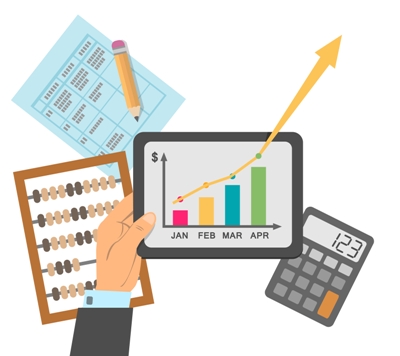Normally, integrating actuals into the planning cycle is not an easy task. Often financial and operating results...
 Background
Background
When I first came across the term driver based planning and forecasting I was confused.
As an ex-investment banker having joined a Finance team the concept of drivers when talking about a forecast or plan was simply assumptions.
Why was it not called just that? Assumptions! Investment bankers have been building models with assumptions ever since the first model was built and a corporate transaction was negotiated.
So what’s all the excitement about driver based planning. It’s simply a financial model with assumptions to drive decisions..no?
Driver Based vs Assumption based
Why give assumptions a different name i.e. a driver, why not just call it assumption based planning?
Ultimately a plan or a forecast is a collection of assumptions both in the numbers that are input into the model but also assumptions around logic construction, which is different to model construction.
Logic construction is about the logic that is created within the model that tells the story of how the numbers interact with each other.
This logic represents how a business operates which is constructed by formulas. Therefore if one called it assumption based planning it would be very confusing as this effectively means the entire model, being a collection of assumptions and formulas.
Drivers are definitely a more accurate term when explaining how to use the model as it allows one to focus on the key levers of the business that will have an impact and drive performance.
If the lever doesn’t drive performance or have an impact then it's just another assumption.
Ultimately if an FP&A team are going to add value they have to show how they are influencing and driving performance, otherwise why bother?
Their purpose exists for this goal, not just to keep score of what happened in the past.
Benefits of defining drivers and how to define them?
Drivers also aid in explaining to non-finance people what are the key factors that influence performance of the business.
Sometimes selling more of one type of product and therefore generating higher revenue is not always increasing value. Especially if the cost to serve that product is marginal or negative on a net profit or EBITDA basis.
Understanding, defining and communicating the drivers alone is not good enough, it’s only a start of the journey, but a very important start!
The definition of what is or is not a driver can also change depending on both internal and external factors like competition, business conditions, events or changes within the organisation, etc. It would be reckless to assume drivers always stay the same. When last was anything in a business exactly the same year on year or even month on month.
There may be a few core drivers that are reasonably fixed, but there are lots of others that may not be.
It’s important to note that ultimately a robust financial model is not just a collection of a handful of drivers but rather a detailed relationship between assumptions (some of which are key drivers) and logic which collectively influence and support decision making.
Internal vs external drivers are important to differentiate as this will also impact the effectiveness on decision making. Where a driver is internal, for example, headcount or travel costs these are generally more controllable. Where a driver is external, for example, market price for a product or service these are generally less controllable.
In my opinion, I don’t believe that any driver is completely uncontrollable. Rental expense might be a fixed cost but the business can always decide to break its lease and move premises (might be a costly decision to do so). The owners of the business may decide to simply shut shop and stop operating which effectively controls all drivers indefinitely ie there is no business.
The market price for a product can be influenced by price wars, discounting, oversupply etc, so whilst one might think something external cannot be controlled it can be, just might not be as effective as internal drivers.
Defining a driver with a practical example
Let me explain by using a practical example.
A bank provides loans to customers and they charge customers a margin on that loan which ultimately drives profit. So you could easily say loan volume and margin are 2 very important drivers. Hard to argue otherwise.
However I would disagree. The drivers are far deeper than just the drawn loan but starts much earlier in the process.
It starts with a lead. Drivers might also be different for different banks depending on their bottleneck in performance.
Let’s break down loan volume into assumptions which one might see in the actual operations of the business.
A drawn loan is an outcome of more upstream activities (yes those peoples who actually make the money) that need to be modeled based on information that is often not in the financial statements but in perhaps in databases or workflow tools (hopefully…assuming they are being collected in the first place).
A lead is created when the customer walks into a branch or visits the website. One of the key assumptions is therefore number of leads.
These leads are then converted into an actual loan application for a requested loan amount. So we have 2 more assumptions being average loan amount and conversion rate.
But not all loans are approved as some either don’t meet lending criteria or the customer gets a better offer or don’t meet certain regulatory requirements for AML/CTF for example. So we can add approval rate as another assumption. So loan volume is therefore simply
#Leads× Conversion rate % x Ave Loan Amount x Approval Rate = Drawn Loan Balance.
So why is it that a lot of people think that the drivers for revenue for a bank are loan volume, its just not that simple and too narrowly defined based on financial information.
So which one is the driver/s? Remember driver is that assumption which increases performance and therefore value of the business.
Now comes the requirement for some data analytics to truly understand whats going on in the business and gain some insight. In order to develop valuable foresight.
What is holding us back in terms of performance? Is it leads, average loans, conversion or approval percentages?
If a bank has plenty of leads compared to industry standards then it clearly isn’t the issue assuming they are lagging competition on loan book performance.
If their average loan size is smaller than the industry then perhaps their cost to serve as a result of smaller loans is a key driver as this needs to be increased.
However, the leads might change when you increase your minimum loan sizes so things cannot be looked at independently but rather tested through time with live simulations or perhaps even Monte Carlo if you want to get fancy.
So it's actually quite difficult to just write down the drivers without doing the work and then using and testing the drivers to make decisions and confirm whether they are indeed the right drivers and having an impact.
Agility and flexibility are therefore critical before you even start to put in a large system, you need a robust financial model (yes potentially in Excel !).
What’s next? So I have my financial model with all assumptions and drivers with back-testing complete.
Now you have something you can road test and streamline even further using a larger enterprise-grade Corporate Performance Management (CPM) system. But you cannot do this successfully until you have built your robust financial model.
Not only to run your business better today but to have a tool to check how accurately your new more powerful and accurate CPM system works.
Remember as stated above, the drivers won't necessarily stay the same through time so you will need to use your financial model to continually test on a more ad-hoc basis what the new drivers might be and then implement this change into the CPM.
If you don’t have a robust financial model or are struggling to define the key drivers and break these down into key assumptions all is not lost. There are consultants out there than can help…I might know some..;)
More importantly, once you have gone through the process of developing the model your corporate knowledge will be significantly enhanced as more people in the organisation will be on the same page.
If you are still unsure please reach out and stay connected to the International FP&A Board and our Linkedin Group FP&A Trends.
The following article was originally published on Model Citizn and has been republished with permission.
Subscribe to
FP&A Trends Digest

We will regularly update you on the latest trends and developments in FP&A. Take the opportunity to have articles written by finance thought leaders delivered directly to your inbox; watch compelling webinars; connect with like-minded professionals; and become a part of our global community.



